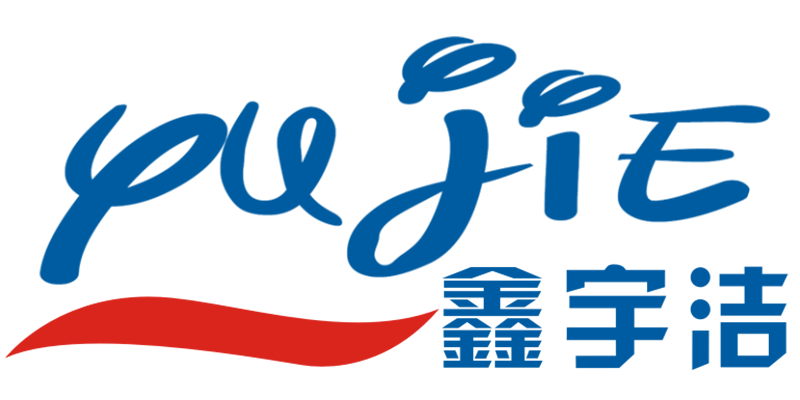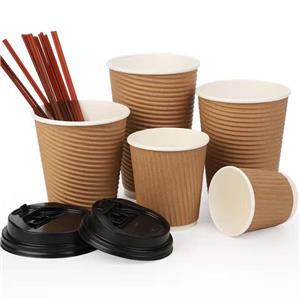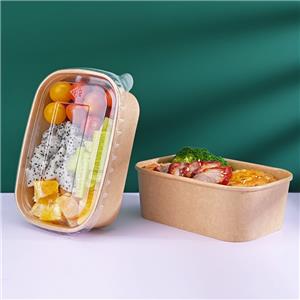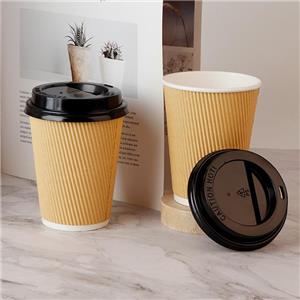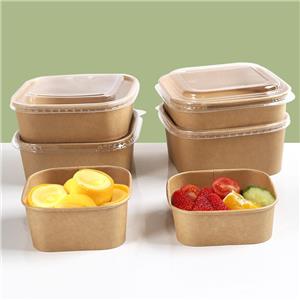Pint vs Quart Chinese Takeout Boxes: Which Size Is Best for You?
Pint vs Quart Chinese Takeout Boxes: Choosing the Best Packaging for Your Food Business
Introduction
Pint or Quart? How to Pick the Right Chinese Takeout Box Size
For restaurants, caterers, or anyone planning an event, the choice between a pint and quart Chinese takeout box is more than a detail—it shapes food freshness, customer happiness, and even landfill waste. These containers do far more than hold food; they seal in flavor and make spill-proof travel effortless. With takeout orders surging and TikTok, Pinterest, and Instagram driving new flavor trends, choosing the right size has never been more critical for a perfect delivery experience.
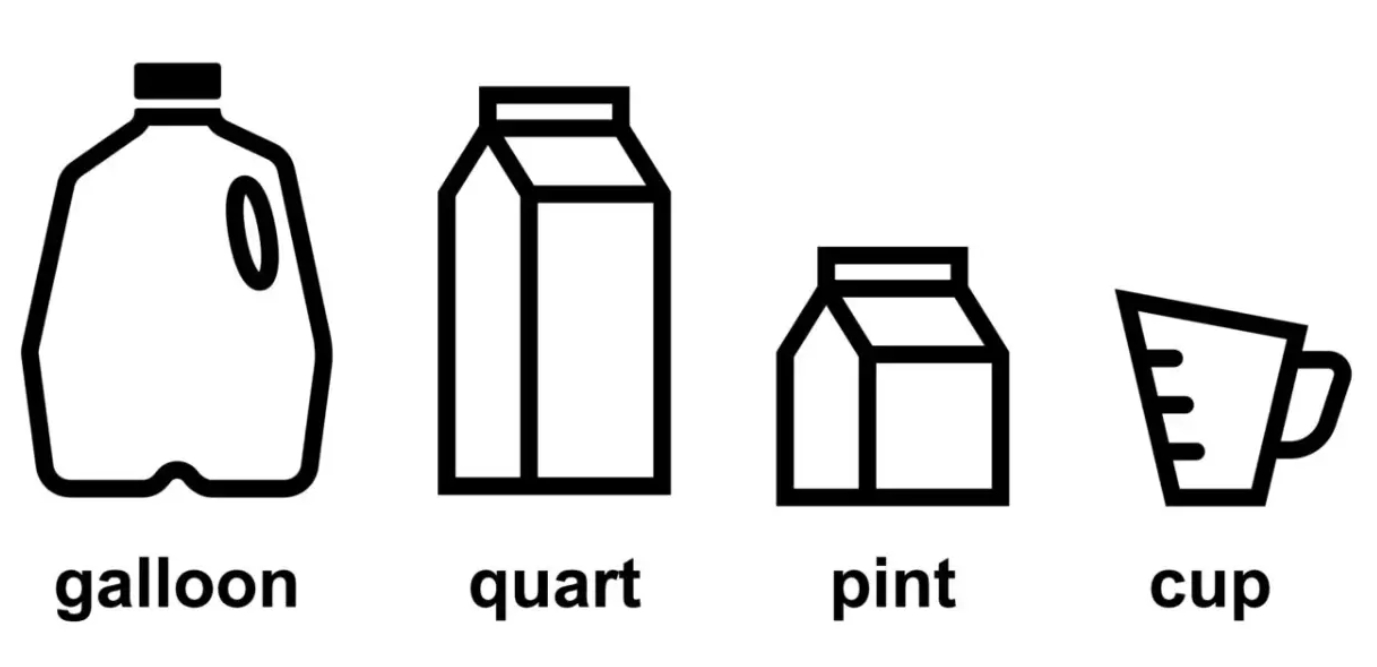
What is a Pint?
Before we compare takeout box sizes, it's important to know exactly what a pint is. A pint (pt) is a volume measurement used in both the imperial and US customary systems. In the food and beverage industry, a pint typically represents a convenient single-serving portion. Understanding pints is especially useful because they connect directly to other standard units of measurement:
2 pints = 1 quart
1 pint = 2 cups
8 pints = 1 gallon
It’s crucial to note that “pint” isn’t a single, universal measure. There are two primary types:
Liquid Pint: The standard for beverages, soups, and sauces, a U.S. liquid pint equals 16 U.S. fluid ounces.
Dry Pint: Less common but relevant for produce like berries or cherry tomatoes, a U.S. dry pint is slightly larger, measuring approximately 18.6 U.S. fluid ounces. This distinction ensures accurate measurement for solids versus liquids.
You’ll encounter pints frequently in daily life. It’s the typical size for a glass of beer or cider, a carton of premium ice cream, a container of fresh berries, or a small carton of milk. Its widespread use in these contexts makes it a go-to measurement for individual consumption.
What is a Quart?
Next up in size is the quart. The term “quart” comes from the Latin “quartus,” which means “a fourth part.” This is because a quart equals one-fourth of a gallon. Quarts are ideal for holding larger quantities, making them a versatile option when you need something bigger than a single serving but smaller than bulk storage.
Here’s how it relates to other units:
1 quart = 2 pints
1 quart = 4 cups
4 quarts = 1 gallon
Like pints, quarts come in two variations:
A U.S. liquid quart holds 32 U.S. fluid ounces, perfect for things like beverages and soups.
A U.S. dry quart is a bit larger at about 37.2 U.S. fluid ounces, used for items like produce.
You’ll find quarts all over the place in your daily life. They’re the standard size for things like a carton of milk or orange juice, a can of paint for a small project, or motor oil for your car. In the kitchen, recipes for family-sized soups or stocks often call for ingredients by the quart, making it the perfect measure for dishes meant to be shared.
A Crucial Distinction: U.S. vs. U.K. Measurement
Although “pint” and “quart” are familiar terms in both the United States and the United Kingdom, they actually refer to different volumes depending on the measurement system used. This distinction arises from the differences between the U.S. customary system and the British imperial system.
Notably, imperial measurements are roughly 20% larger than their U.S. equivalents.
Here’s a detailed breakdown with metric conversions for clarity:
United States Customary System:
1 U.S. Pint = 16 U.S. fluid ounces (oz) ≈473 milliliters (mL)
1 U.S. Quart = 32 U.S. fluid ounces (oz) ≈946 milliliters (mL)
Note: U.S. dry pints and quarts, which are about 16% larger than their liquid versions, also exist but are less common in general use.
British Imperial System:
1 Imperial Pint = 20 Imperial fluid ounces (oz) ≈568 milliliters (mL)
1 Imperial Quart = 40 Imperial fluid ounces (oz) ≈1,136 milliliters (mL) or 1.14 liters
Understanding the Impact of These Differences:
For a restaurant or catering business, understanding this difference is key to standardizing recipes and managing costs. For the consumer, mistaking an imperial pint in a British recipe for a U.S. pint will result in incorrect ingredient ratios, potentially ruining the dish.
Additionally, for international readers who are following recipes or considering product sizes, understanding these differences is essential. For example, Chinese takeout boxes in the U.S. are typically labeled as “pint” or “quart” according to the U.S. customary system, which may not match the sizes you expect from the imperial system. When precise measurements matter, always check which measurement standard is being used to ensure accuracy.
For a more visual and clearer understanding of pint and quart conversions, take a look at the video below. Mr. J uses lively demonstrations and real-world examples to explain the conversion methods, which should help you learn quickly and effectively.
Understanding the Differences Between Pint and Quart Chinese Take Out Boxes
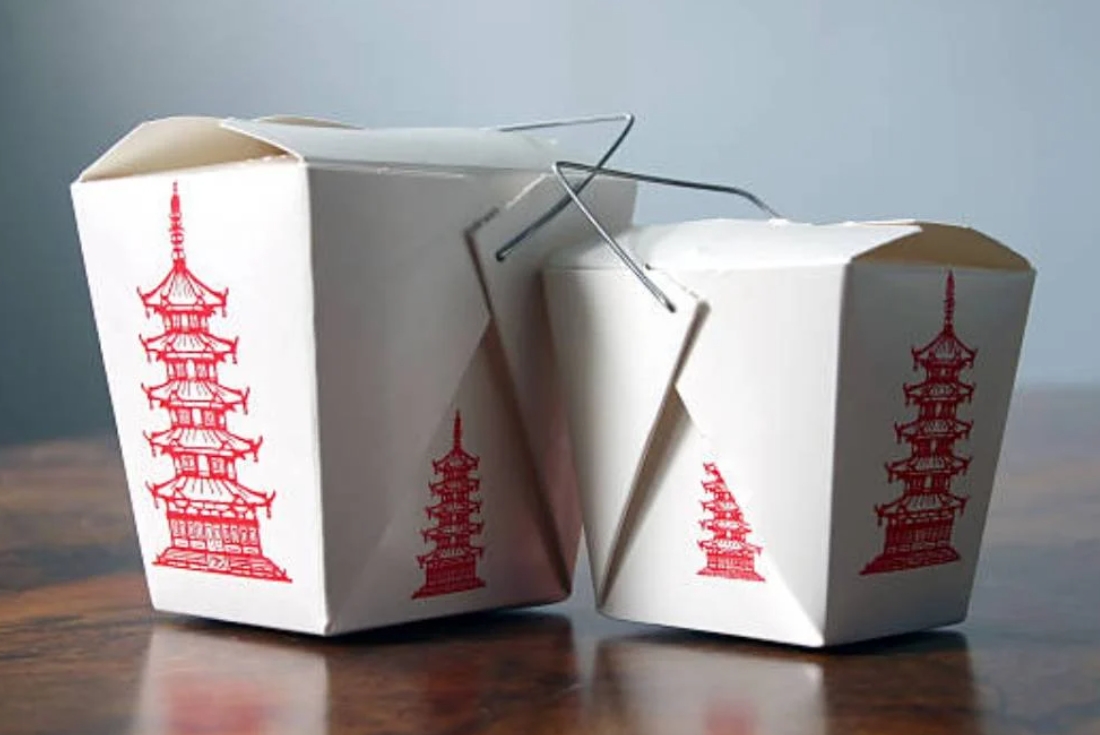
When looking at pint and quart chinese take out food boxes, it’s not just about the amount of food they can hold, but it is about the physical dimensions of these boxes and how these dimensions make them appropriate for different food items. Let’s get right onto it, the comparison in detail.
| Feature | Pint Box | Quart Box |
| Volume | 16 ounces (approx. 473 mL) | 32 ounces (approx. 946 mL) |
| Dimensions | 3″x4.5″x2.5″ (Length x Width x Height) | 4″x4.75″x3.5″ (LxWxH) |
| Ideal For | Individual portions | Family meals or shared dishes |
Pint-Sized Takeout Boxes: The Perfect Individual Serving
Pint-sized takeout boxes, which hold about 16 ounces of food, are ideal for single servings. These compact containers, often featuring a convenient wire handle, are perfect for individual meals. They're commonly used for single-serving portions of rice, noodles, or other small items. These boxes are great for solo diners who want to control their portion sizes, and their smaller size helps reduce food waste while making meals more enjoyable. They're frequently used for packaging snacks or small gifts, making them a common sight at small gatherings or as party favors, where personal enjoyment is the focus.
Quart-Sized Takeout Boxes: Ideal for Sharing and Community
In contrast, quart-sized takeout boxes can hold approximately 32 ounces of food, making them perfect for sharing with family or friends. These larger containers are ideal for communal dining experiences, such as birthday parties or wedding favors, where togetherness is key. They can accommodate food for a large group, making them essential for family dinners or big parties. Despite their larger capacity, they maintain the same level of food quality and freshness, ensuring that each person in the group can enjoy their own portion.
Materials and Environmental Impact of Takeout Boxes
It is the environmental impact and sustainability that are the main factors when selecting materials for Chinese food containers. Traditional choices have ranged from paper with a plastic coating for strength and moisture resistance, to hard plastic containers renowned for their robustness. Nevertheless, these materials give rise to recycling complexities as well as environmental issues such as their long decomposition times and the pollution that is linked to the production and disposal of them.
Eco-Friendly Alternatives:
Bamboo and Sugarcane (Bagasse): These sustainable materials provide compostable food packaging options that naturally biodegrade, helping to minimize landfill waste. Because bamboo and sugarcane are fast-growing renewable resources, they help decrease reliance on harmful plastics and chemicals, key contributors to environmental pollution.
Recycled Paper (such as Kraft Paper): Recycled paper packaging is recyclable and helps reduce deforestation by making use of previously used materials. Even when heavily soiled, it can often be reused, aligning with the principles of a circular economy and supporting a lower environmental footprint.
Sustainability Metrics:
The use of biodegradable materials such as bagasse can cut the emission of greenhouse gases by as much as 90% compared to polystyrene, and even bamboo and recycled paper products emit as much as 70-80% less CO2 emissions compared to conventional plastics.
When going for materials such as bamboo, sugarcane, or recycled paper for pint or quart Chinese takeout food boxes, the consumer gets what they want (sustainable products) and the business is able to show that it is concerned about the environment.
Recycling and Disposal Considerations for Pint and Quart Boxes
The impact of pint and quart boxes from Chinese takeout on the environment depends on how they are thrown away and recycled. Usually, these boxes can’t be recycled because food waste sticks to them. This means they end up in garbage dumps. But, if we start using boxes made from materials like bamboo or sugarcane, things can get better. These materials are good because they can break down easily. Of course, this only works if people have a place nearby where they can compost and actually use it.
Teaching customers how to dispose of these boxes correctly is very important. Also, businesses should try to use the smallest box needed to reduce waste. Choosing packaging that can be recycled or composted easily helps lessen the negative effects of takeout food on the planet.
Functionality and Convenience of Pint vs Quart Boxes
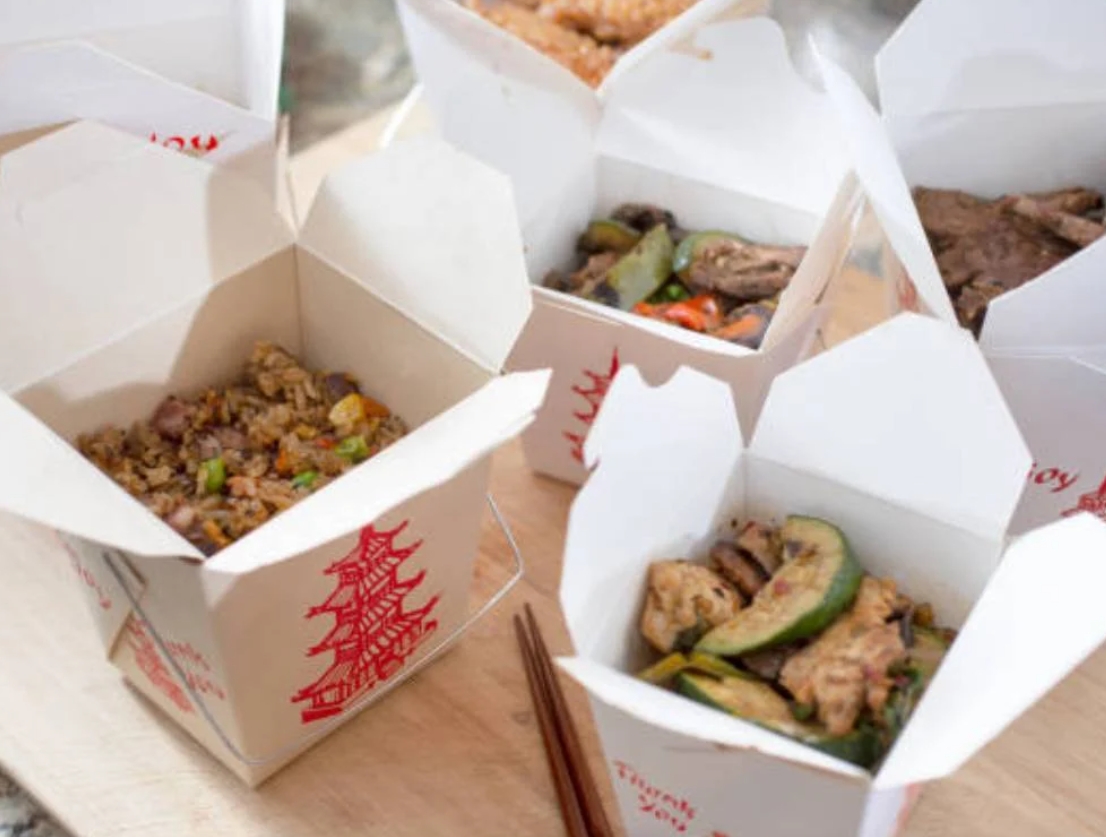
Keeping Food Fresh: Sealing and Leak Prevention
Where it comes to preventing food spoilage and leakage, the pint and quart Chinese takeout boxes are very efficient. These buckets, which are usually called oyster pails or food pails, have a unique shape. They have a lid that folds over to prevent the food from being cold or stale. However, not all boxes are created equal. The pint and quart sizes may use different seals.Quart-sized boxes are bigger. This is why they might require an additional feature like stronger seals or rigid corners. These additions ensure that the food is not spilled even if it is something with a lot of liquid. On the other hand, pints are smaller. The shape of the containers prevents spillage. This results in them being better suited for foods that are not too wet.
Insulation Comparison: Which Size Retains Heat Better?
Insulation is another important factor to consider when deciding between pint and quart takeout boxes. Insulation refers to how effectively the box retains heat to keep your food warm. Larger boxes, like quarts, tend to lose heat more quickly than smaller pint boxes, making it harder to maintain the desired temperature for your meal. However, using better insulating materials or packing the food more tightly can help keep it hot for longer, as less air inside the box means better heat retention. Whether you are running a food business or simply ordering takeout, choosing between pint and quart sizes is crucial—not only for portion size but also for maintaining your food’s warmth. Consider both the quantity of food needed and how to best preserve its temperature when making your selection.
Optimizing Your Takeout Packaging Strategy
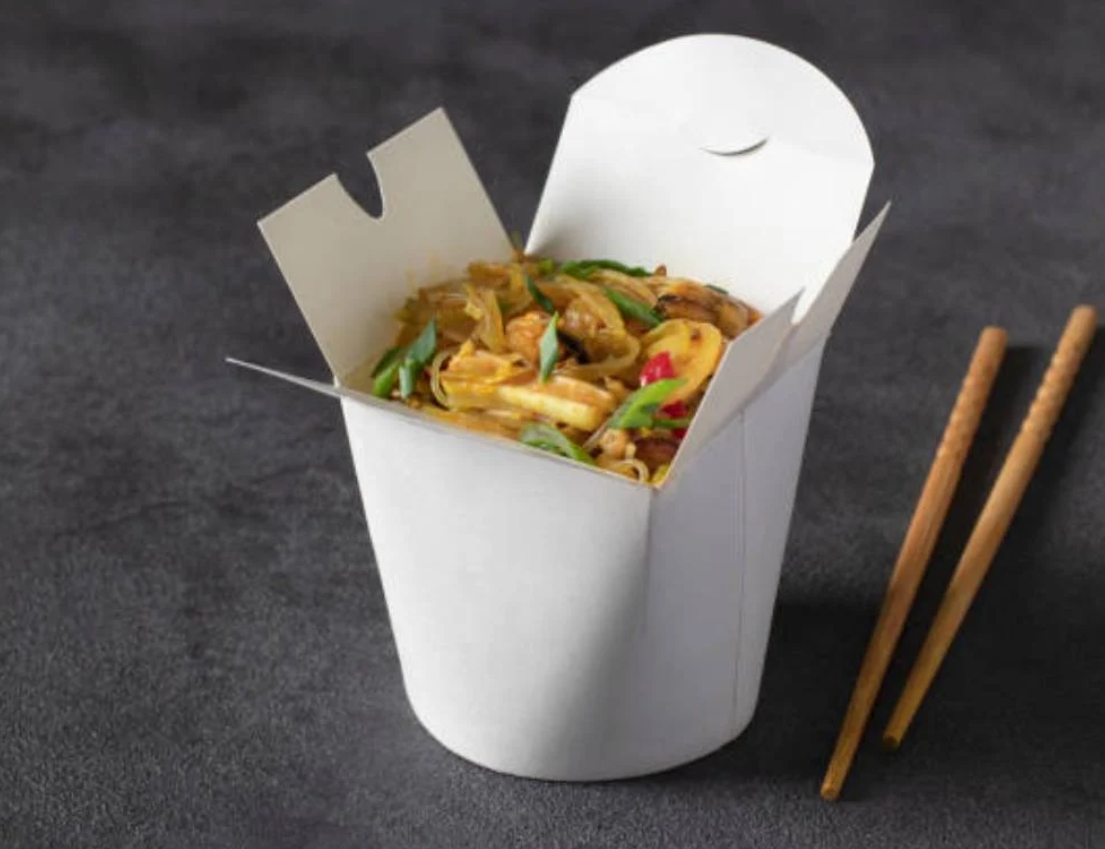
The choice of size of the food storage container is a vital factor for the food business. The containers do not only matter. It is about discovering the wishes of their customers. The great way is to use both pint and quart containers as it is more practical. This makes them able to serve a variety of customers with different needs and preferences, highlighting the value of the food storage container. For example, a company can use quart box for the main dish and pint box for the side orders or smaller portions. This approach fulfils the needs of individuals and also groups.
This provides the business with an insight into what customers usually order to further inform the choice of menu. It is essential that they have the pint and quart boxes in stock corresponding to what the people buy. This is when customers get satisfied and save on waste and costs. Ultimately, this helps the business to do better not only in terms of environmental issues but also in financial aspects.
Cost-Effectiveness and Business Considerations
The cost of disposable pint and quart food storage containers can differ. This depends on the seller, what the boxes are made of, and how many you buy. Still, we can give a basic idea of the prices to help businesses plan and make choices. Usually, pint boxes might cost between 10 cents to 20 cents each. Quart boxes might cost between 15 cents to 30 cents each. These prices change based on several factors.
For smaller or medium-sized businesses, buying 500 to 1,000 boxes could get you a good price. This way, you can buy a lot at once without needing a big place to store them. Larger businesses that order more than 1,000 boxes could get an even better deal. They pay less per box because they’re buying so many.
Here’s a clearer breakdown:
Small to medium businesses might buy 500 to 1,000 boxes. They could pay about 15 cents for each pint box and 22 cents for each quart box. This finds a middle ground between cost and how much storage space they have.
Larger businesses ordering more than 1,000 units could pay as low as 10 cents for pint boxes and 15 cents for quart boxes. This way, they make the most of buying in bulk.
Conclusion
The debate between pint and quart Chinese takeout boxes goes beyond just differences in volume—it also encompasses considerations of sustainability, cost efficiency, and customer preferences. In today’s highly competitive food service industry, the choice of takeout packaging plays a crucial role in the overall dining experience, shaping both brand identity and customer satisfaction. By carefully selecting between pint and quart sizes according to your menu offerings and target market, your food business can boost customer satisfaction, encourage repeat business, and address environmental concerns. As the food industry continues to evolve, staying informed and adaptable is essential for long-term success in the ever-changing world of takeout dining.
